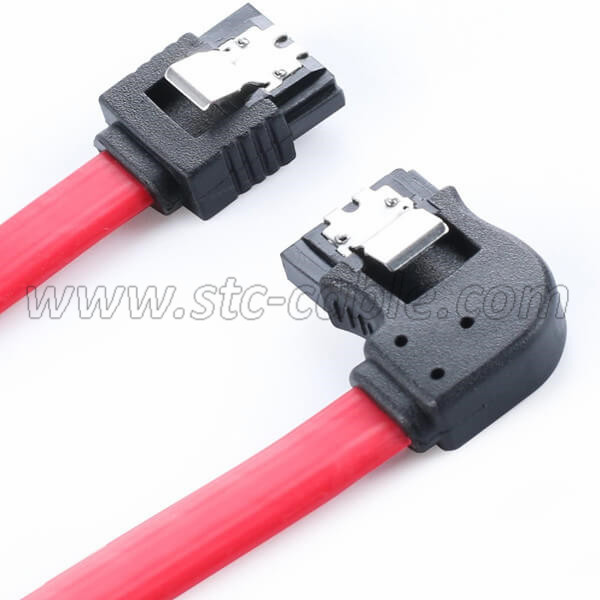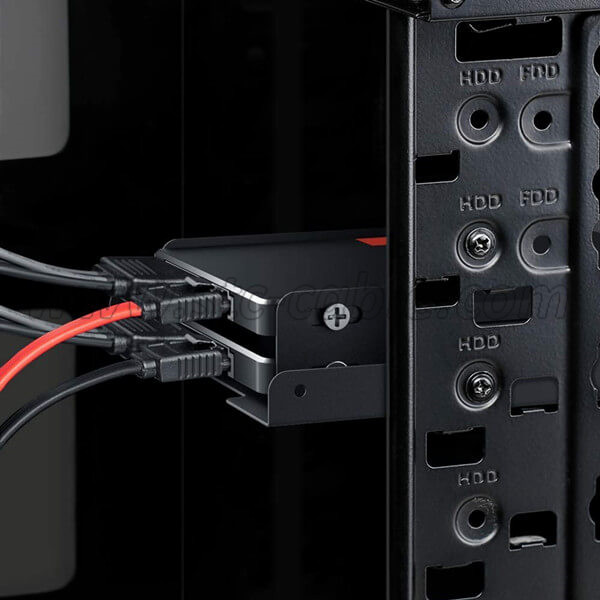What is the SATA?
SATA (Serial AT Attachment) is a computer bus interface that connects host bus adapters to mass storage devices such as hard disk drives, optical drives, and solid-state drives. Serial ATA succeeded the earlier Parallel ATA (PATA) standard to become the predominant interface for storage devices.
SATA is one of the mainstream hard disk interfaces. Currently, SATA2.0 and SATA3.0 are relatively common on the market. Although the current popularity of SATA interfaces is obviously not as high as before, it still occupies the mainstream interface solution.
Definition of SATA
The full name of SATA is Serial Advanced Technology Attachment, a serial hardware drive interface based on industry standards. It is a hard disk interface specification jointly proposed by Intel, IBM, Dell, APT, Maxtor and Seagate.
Classification of hard disk interfaces
The two types we mainly introduce here are already somewhat old. The SATA interface has a simple structure, supports hot swapping, has fast transmission speed and high execution efficiency. Hard drives using the SATA (Serial ATA) interface, also called serial hard drives, are the current mainstream hard drive interface. Nowadays, most SSDs are serial hard drives using SATA interface. Corresponding to the serial hard drive is a hard drive using the PATA (Parallel Advanced Technology Attachment) interface. PATA hard drives are called parallel ATA hard drives. They use a four-core power cable and an 80-core IDE data cable to connect to the motherboard to transmit data in parallel and in series (serial). The transfer rate is low due to the limitation of parallel transmission, and PATA hard drives do not need to be driven.
Advantages of SATA
(1) Stronger error correction ability.
Serial ATA uses a serial connection method. The Serial ATA bus uses an embedded clock signal and has stronger error correction capabilities. Compared with the past, its biggest difference is that it can check the transmission instructions (not just data). If Errors are automatically corrected when found, which greatly improves the reliability of data transmission.
(2) Mainstream norms with a higher starting point.
The data transfer rate defined by Serial ATA 1.0 can reach 150MB/s, which is higher than the maximum data transfer rate of 133MB/s that parallel ATA (ie ATA/133) can achieve; the data transfer rate of Serial ATA 2.0 reaches 300MB/s, Serial ATA 3.0 has reached a high data transfer rate of 600MB/s. SATA specifications retain a variety of backward compatibility methods, and there are no compatibility issues in use.
(3) With hot-swappable function.
This feature makes it easier to build a disk array. Since the serial port data cable only uses a four-pin structure, it is more convenient to install than the parallel port, which is more conducive to reducing the number of cables in the chassis and conducive to heat dissipation.
The difference between SATA 2 and SATA 3
The SATA 3 transfer rate can reach 6Gb/s, while the SATA 2 interface has a transfer rate of 3Gb/s. Theoretically, the SATA 3 interface is twice as large as SATA 2.
The hard disk interfaces of SATA 2 and SATA 3 motherboards have basically the same appearance, but many low-end and mid-range motherboards use a mixed mode of SATA 2 and SATA 3 dual interfaces, such as the A75 of the AMD platform, and the B75, H81, and B85 motherboards of the Intel platform are all SATA 2SATA 3 Dual interface mixed mode, while some mid-to-high-end motherboards, such as A88, H87, Z87 and other motherboards, all have SATA 3 interfaces.
Send your message to us:
Post time: Sep-12-2023


